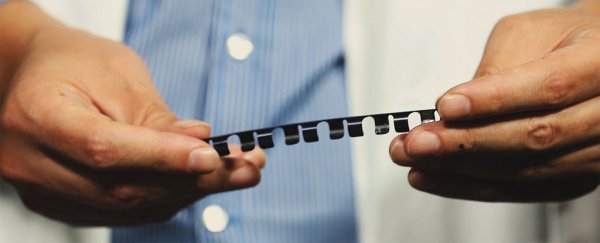For men who no longer have the ability to become erect naturally, the loss of healthy sexual function can be incredibly challenging – but a new penile prosthetic device could restore that missing spark.
Scientists in the US have developed a heat-activated penis exoskeleton using a memory metal called nitinol – a nickel-titanium alloy – that changes its shape depended on what temperature it is.
The idea is that this prosthetic, once implanted in the penis, would remain flaccid while at body temperature. But when the situation calls for it, heating the implant would cause it to harden, expanding into a straightened, elongated shape.
According to the research team – led by urologist Brian Le from the University of Wisconsin-Madison – that artificially induced hardness could go a long way to making men who've lost the ability to become erect feel good about themselves.
"It's a survivorship issue," says Le. "[R]estoring function can help people feel whole in their bodies again."
While existing penile implants use inflatable pumps or rods to help patients become erect, the researchers say these older technologies can be difficult to use and potentially cause tissue damage.
By contrast, the unique properties of nitinol could make for a much more sophisticated device. The super-elastic metal is what's called a shape-memory alloy, which means it can 'remember' an original shape that it reverts to when heated.
In the case of the penile implant, the original shape is the stiffened, elongated form, but once it cools down, the prosthetic changes into a limp, slightly curved form.
You can see the transition in the video below. When the implant is dropped into a small pool of heated water, it instantly straightens out into its remembered position.
Of course, some of you out there reading this – particularly the guys – might be wondering (or worrying) about just how the heat gets applied to this rather sensitive part of the male anatomy?
The answer is a remote-control device that the researchers are currently working on. The team envisages that this remote heating tool will be able to be simply be waved over the penis, heating the nitinol implant via induction.
In other words, men won't need to dunk their appendage into a steaming hot tub in order to get erect.
And the other good news is the relatively mild temperature the alloy hardens at. According to the researchers, the nitinol will change shape when it's raised a few degrees above body temperature – so the transition shouldn't be painful, but hopefully it's also hot enough that it won't get triggered at the wrong time.
It'll take a lot more testing before this kind of implant becomes commercially available, but the scientists are hopeful – provided further trials indicate everything is safe – the prosthetic may hit the market within five to 10 years.
"We're hoping that, with a better device, a better patient experience, and a simpler surgery, more urologists would perform this operation, and more patients would want to try the device," says Le.
With as much as 40 percent of men aged 40 experiencing erectile dysfunction, it's clearly a huge issue, and while many of those individuals can turn to drugs like Viagra, such medications don't work for everybody.
According to the team, one-third of men with erectile dysfunction between the ages of 40 and 70 don't respond to the drugs, so better penile implants could be a massive deal for affected males and their partners – and hopefully they don't have too long to wait.
"We are at this stage past the prototype," Le told George Hesselberg at Mesabi Daily News.
"The restrictions on this device are not going to come from the research, but from regulatory hurdles that determine whether it can be put inside a person, what kind of trials need to be involved."
The research is published in Urology, and for more on nitinol, check out the video below:
